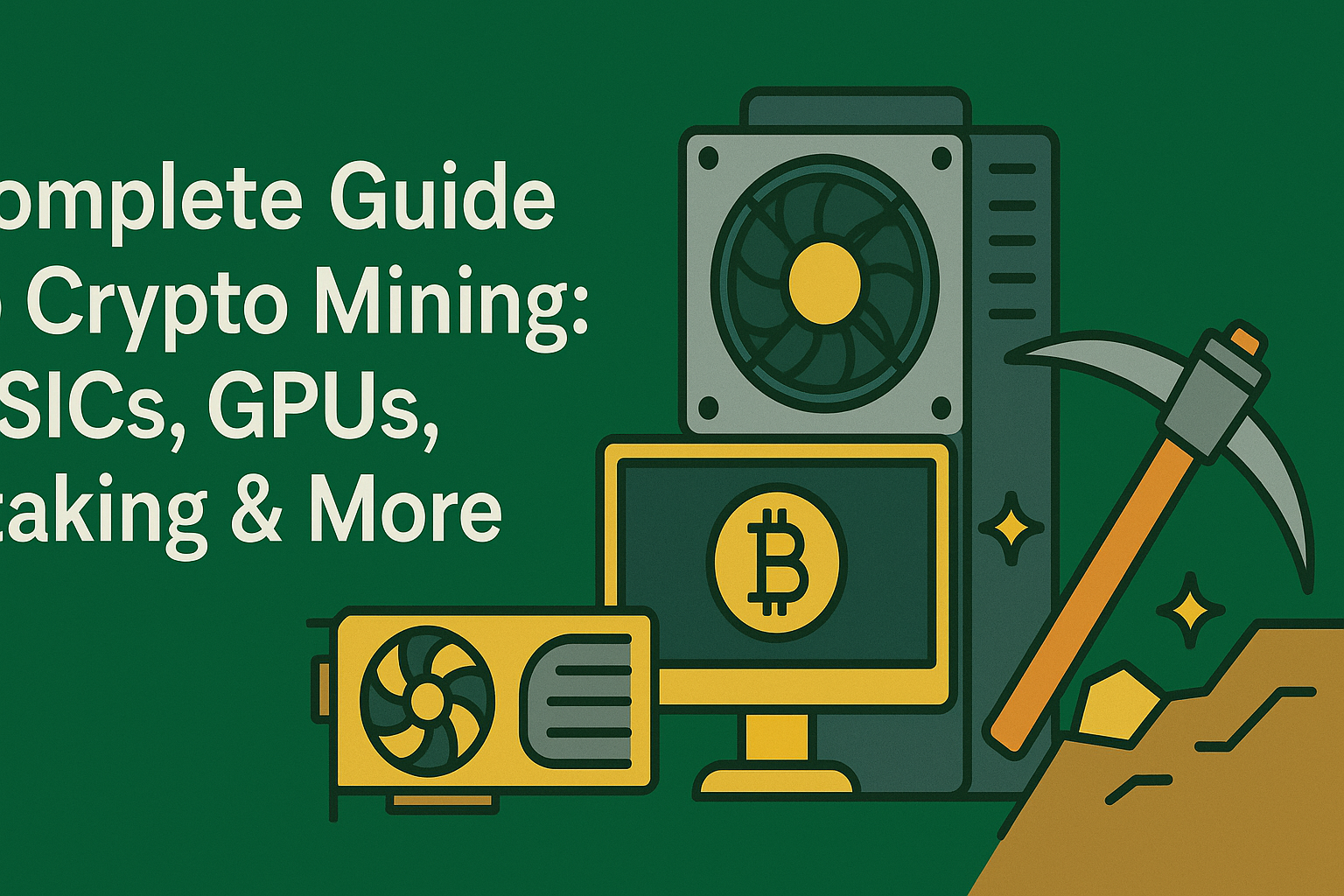Complete Guide to Crypto Mining: ASICs, GPUs, Staking & More

Cryptocurrency mining plays a critical role in the blockchain ecosystem by validating transactions and adding new blocks to the ledger. Although it started as a niche practice, mining has grown into a global industry with a wide range of methods available today. Let’s explore how it works and the main types that shape the digital currency landscape.
What Is Mining in the Crypto World?
In decentralized systems like Bitcoin, no central authority controls the network. Instead, miners maintain its integrity. By solving complex mathematical tasks, miners confirm transactions and protect the system against fraud. For their efforts, they receive cryptocurrency rewards, making the process both essential and profitable.
Main Mining Techniques
1. ASIC Mining (Application-Specific Integrated Circuits)
ASICs are specialized devices designed solely for mining. They offer extremely high performance but are expensive and lack versatility. ASICs dominate the Bitcoin network and provide a clear advantage in Proof of Work-based systems.
2. GPU Mining (Graphics Processing Units)
Popular among hobbyists and professionals alike, GPU mining is suited for coins like Ethereum Classic and Ravencoin. It allows more flexibility than ASICs and can be upgraded over time. Many miners build custom rigs using multiple GPUs for optimal output.
3. CPU Mining (Central Processing Units)
Though largely outdated for major coins, CPU mining still exists for lesser-known tokens with lower difficulty. It requires no investment in special equipment, making it suitable for beginners experimenting with blockchain technology.
4. Cloud Mining
In this model, users lease mining power from remote data centers. It’s a passive approach — no hardware or maintenance required. However, returns may be lower, and the risk of unreliable providers remains high.
5. Staking (Proof of Stake)
Not technically “mining,” staking involves locking up coins in a wallet to support the network. In return, users earn rewards over time. PoS is energy-efficient and increasingly popular, especially after Ethereum transitioned away from PoW.
6. Hybrid Methods and Innovations
Some newer blockchains combine PoW and PoS to balance energy efficiency with security. Others support mobile or browser-based mining, enabling users to participate from low-powered devices.
Final Thoughts
The crypto mining space is vast, offering various paths depending on your goals, resources, and technical skills. Whether you’re building a GPU rig or staking coins in a digital wallet, each method contributes to the decentralized future of finance.
As technology progresses, we’re likely to see even more diverse and accessible mining options, reinforcing the idea that blockchain is an ever-evolving ecosystem — open to everyone.